Osteochondrosis is a complex of degenerative-distribution-distribution of the cartilage tissue located between the vertebral vertebrae. In this pathological phenomenon, the discs themselves are affected, their changes in height, bone tissue is damaged in the cervical region.Pathology has similar symptoms with some diseases. The main thing is to note the first signs of the body in time and undergo diagnostics with the necessary treatment, otherwise osteochondros will begin to progress, cause migraine disorders and blood circulation. Basically, the pathology develops in people who reduced motor activity. This is due to the fact that the exchange of mineral salts in the body is disturbed, which causes joint tissue thinning as well as a decrease in its strength.
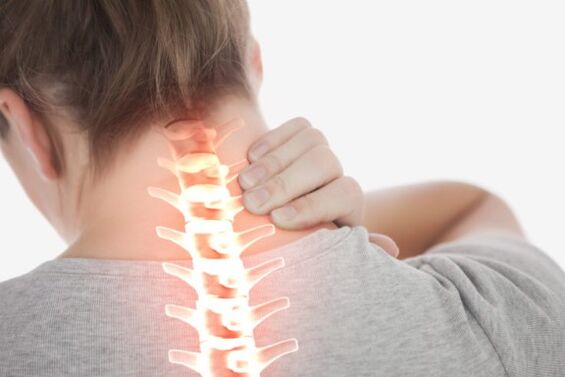
Causal factors of the occurrence of the disease
The neck is the most mobile part of the body, so it experiences a constant load as it is obliged to hold the head in a certain position. Some factors may have a negative effect on this area of the body and form inflammatory processes in the connective tissues of the body.
The reasons for the development of pathological deviations in cervical vertebrae are:
- non -compliance with energy rules, which is why overweight weight of weight;
- Functional change in the skeletal-muscular system;
- Hypodinamia;
- neck injury or spine spine;
- Excessive physical pressure in the spine spine;
- stress;
- Long -term physical tension of cervical muscle structure;
- heredity;
- Anomalies in bone development.
All of these factors negatively affect the vertebrae of the cervical region, creating pressure, which leads to the involuntary tonic reduction of the soft and skeletal muscles. Which leads to the formation of hemodyscyllative processes, a slowdown in the functions of metabolism, the development of dysfunctions and degenerative changes in cartilage. Vertebrae begin to deform, acquiring a non -standard shape and usually go beyond the spine column.
Symptoms of the disease
The early stage of the pathological process is clearly visible by some signs.
- Cephalgic syndrome. It is formed during cerebral angiosespasm, squeezing the cerebraffinal brain nerves, as well as against the bottom of involuntary intracranial hypertension. It spreads through the occipital part of the head, the neck, affecting the shoulder region and the upper limbs. Pain syndrome may resemble a prolonged increase in blood pressure (hypertension), an attack by angina pectoris, a violation of brain circulation and manifests in the form of paroxysmal, constant or pulsating nature. Anxiety can increase, mood changes, the concentration of attention decreases, a person gets annoyed, sensitive;
- Dizziness occurs, the coordination of the movements is disturbed. Everything is accompanied by tinnitus, nausea, vomiting and disorientation appears. It is not always a sign of this pathology, as it can manifest itself as a result of otitis medium or internal, cardiac disorders, brain angiosespasm or impaired nerve cell function. In addition, dizziness is often observed with a vestibular disorder;
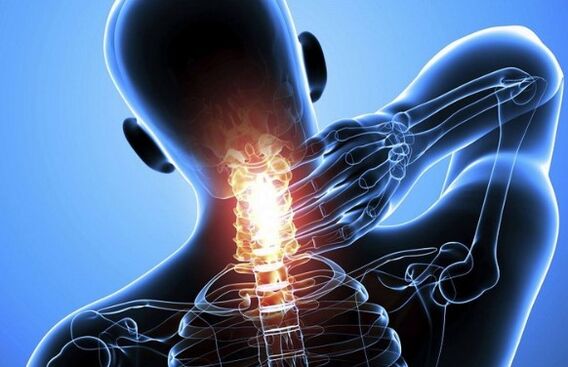
Important!There are two types of dizziness. With non -systematic dizziness, evil appears, impressive, it is difficult for a person to be in a vertical position. But at the same time, objects that fall in view do not rotate. And with the systemic, the circular movement of all objects manifests itself, which indicates violations in the work of the vestibular apparatus, visual perception, muscle spasms. This is a distinct sign of dizziness for osteochondrosis.
- painful manifestations in the neck. Sensations of pain are located not only in muscle tissues, but also on the shoulders, including upper limbs. The occurrence of pain develops suddenly and lasts a long time and can have a short time. If the disease does not turn into a relapse, the pain passes after a while, while there will be a follow -up of a slight specific sound (crisp);
- Hypertension. When compressed at nerve endings, a sharp leap occurs in blood pressure. Therefore, if increased pressure is observed for a long time, this is not a symptom of osteochondrosis. High pressure in this disease is combined with cephalgia, painful pain in the hands, compressing the chest, the cervical-brotheral region of the back loses its sensitivity. The state of weakness, fatigue, lack of strength in the upper limbs muscles.
Table. Osteochondrosis classification of the cervical region.
| Internship | Feature |
|---|---|
| 1 degree | The lordosis of the neck is slightly softened. The occurrence of pain, intensifying as it moves the head. The emergence of a tense state and weakness in the muscles of the lower back. |
| 2 degree | There is a decrease in sizes of fibrous and chrysic formations, compressing nerve branches. The pain is radiated on the shoulders, hands, intensifies when moving the neck. Cephalgic syndrome, a feeling of fatigue, distraction, development and performance, is reduced. |
| 3 degrees | Sensations of pain of a constant nature at the upper, cervical ends and shoulder hotel. There is muscle weakness, dormancy of the limbs. A hernia of intervertebral discs is formed. The neck is inactive, the vertigo appears. |
| 4 degrees | Fibrous and Chrysline formations are destroyed. The connection fibers replace the destroyed cartilage. The process of destruction can simultaneously affect more than one vertebral segment. The patient is completely disoriented, pain and vertigo increase. |
What is the danger of the disease?
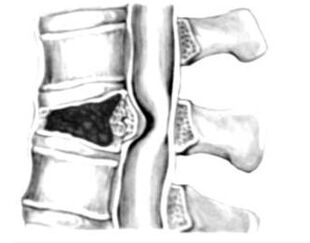
Pathology harms the whole human body. With osteochondrosis, blood vessels, nerve roots are strongly squeezed, leading to devalogy encephalopathy, cephalgic syndrome develops, cardiac rhythm pathologies, visual, respiratory systems, concentration and coordination are caused.
The disease tends to cause:
- various pathologies of the brain;
- Various disorders of the vestibular, vascular and vegetative nature;
- Acute violation of spine circulation with the development of ischemia or hemorrhage (stroke).
Diagnosis
Ways to diagnose violations of intervertebral discs.
- Radiography. It is not effective enough in the last stage of the disease.
- Magnetic Resonance Tomography (Magnetic Resonance). A research method, which carries detailed information about the presence of deviations, bone structure pathologies, connective tissue, is a hernia, with the clarification of its size, location and growth.
- Computed tomography using contrast. Allows to determine pathology in vertebrae. The disadvantage in this study is the impossibility of determining the presence of spinal cord compression.
- Ultrasound dopplerography. The effectiveness of this method is to determine the reduction in blood circulation through the blood vessels.
Treatment Characteristics
In the treatment of cervical osteochondrosis, they are based on the degree of disease, their characteristic clinical manifestations and form. Treatment can be performed as:
- Non -surgical therapywhose purpose is to eliminate symptoms, manifestations of the disease to relieve the patient's condition using medications and physical therapy, therapeutic exercises, massage;
- surgical intervention;
- combined therapy. In this method, surgical intervention is performed with additional treatment with medicines.
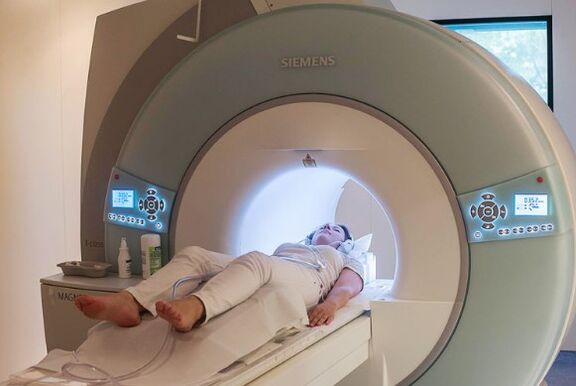
After a diagnostic exam, the expert makes a final diagnosis and prescribes the necessary treatment, depending on the clinical image of the disease. Basically, if the disease is at an internship that does not require surgical surgery, complex therapy is prescribed, which includes taking medications, the performance of therapeutic exercises and the passage of the healing massage course.
Medication
The doctor prescribes medications designed to eliminate the symptoms of pain, inflammation and muscle tension, restoring cartilage tissues, replenishing the body with a vitamin-mineral complex in the form of capsules, injections, ointments.
Therapeutic Physical Culture (Exercise Therapy)
Medical Physical Education is prescribed to restore blood circulation in the cervical region. Movements should not be clear, with rotation or excessive head flexion. It is necessary to imitate the listed movements. The exercises are performed no more than two minutes. The exercise complex includes head tilt forward and backwards without performing the action to the end.
Basic exercises used to treat osteochondrosis.
- The pose of "bedtime" in the stomach is accepted. The hands rest on the floor, and the head and the trunk come up. The back remains straight. It is necessary to be in this position for about two minutes in 2-3 approaches.
- The pose of "bedtime" in the stomach is accepted. The hands extend along the body. The heads of the head are made to the right and left, trying to touch the floor with the ear. 6-7 approaches to each side.
- The pose of "sitting" is accepted. With an inhalation, there is a front slope while trying to stretch to the chest with the head. When you expire, a return to your original position is made with a slight inclination of the head back. 10-15 approaches are performed.
- In the pose "sitting", the palms are applied to the forehead, while making a pressing movement. The head also takes the palms from his hands, creating the effect of resistance. 2-3 approaches of 30 seconds are performed.
- Circular head movementswhich are performed very carefully and slowly to the right and left. Ten movements are performed in each direction, avoiding dizziness.
Therapeutic massage
In the treatment of osteochondrosis, the expert does massage movements in the cervical area, in the collar and upper back area. This procedure should be performed in a lying position so that the patient's body is relaxed.
The main techniques of therapeutic massage:
- Caressing- A technique in which the huge hand slides along the skin with a small degree of pressure, capturing the area of the base of the head and moving to the upper back.
- Squeeze- A technique during which a stronger effect on the skin, subcutaneous tissue and a superficial layer of muscles are performed. The skin of the skin with the fingers occurs carefully, ignoring the peripated tissues.
- Grinding- It consists of the change and stretching of the tissues in various directions to heat the skin and the blood flow to the collar region.
- Knead- The most difficult technique that affects deep muscle tissue. It is performed only on the recommendation of a doctor, with caution, as it may lead to a complication of the disease.
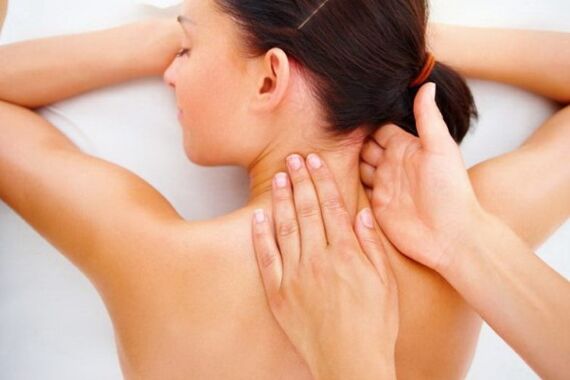
Physiotherapeutic treatment method
For the treatment of intervertebral disc pathology of the cervical region, physiotherapy is prescribed.
- MEDICINAL ELECTROFORESIS-Fisiotherapeutic ultrasonic procedure performed in sinusoidal modulated current.
- Laser therapy- This is the physiotherapy method, which activates blood circulation, eliminates the inflammatory process, reducing pain. Laser therapy is performed to improve blood flow.
- Magnetotherapy- One of the methods based on the treatment of magnetic field exposure, with the influence of which tissue edema is removed and pain is eliminated.
- Ultrasound therapy- Treatment allows you to relieve pain, the inflammatory process and improve blood circulation.
Traditional medicine in the treatment of cervical spine osteochondrosis
Folk methods to treat osteochondrosis will not work. This is due to the fact that these methods are able to temporarily relieve symptoms, but not to solve the main problem - the initial destructive effect on the spine of the spine. At home, plant components can be used as a support complex to the main therapeutic treatment established by the doctor.
For pain in the cervical region, you can use:
- Fly leaves (treated with boiling water, are applied to the focus of pain);
- Raw potatoes and honey (potatoes are rubbed until porridge is formed, mixed with honey in equal proportions and applied to the inflammation site at least once a week);
- Mustard, pepper stains and alcohol (used for local irritation, increased blood circulation and pain removal).

Preventive measures
To avoid the occurrence of one of the dangerous diseases, it is necessary to observe certain rules for a lifetime. After the right lifestyle can be avoided by many diseases. However, there are situations where the disease is inherited and then it is worth reaching your health. Food nutrition enriched with vitamins and minerals, as well as moderate physical activity, will help keep the body and even stop the development of an initial disease.
Doctors' recommendations that will help avoid the onset of the disease:
- bring an active lifestyle, engaging in swimming;
- Observe proper nutrition;
- eat foods with calcium, magnesium (seafood, vegetables, dairy, vegetables);
- Perform daily -physical heating ups, especially if the work is associated with a constant session position;
- Use special orthopedic pillows and mattresses to sleep.
At any age, with osteochondrosis, it is worth performing a body examination regularly, as well as conducting a therapeutic physical culture with regular massage and, with the disease, you can live for a long time and with comfort.


















